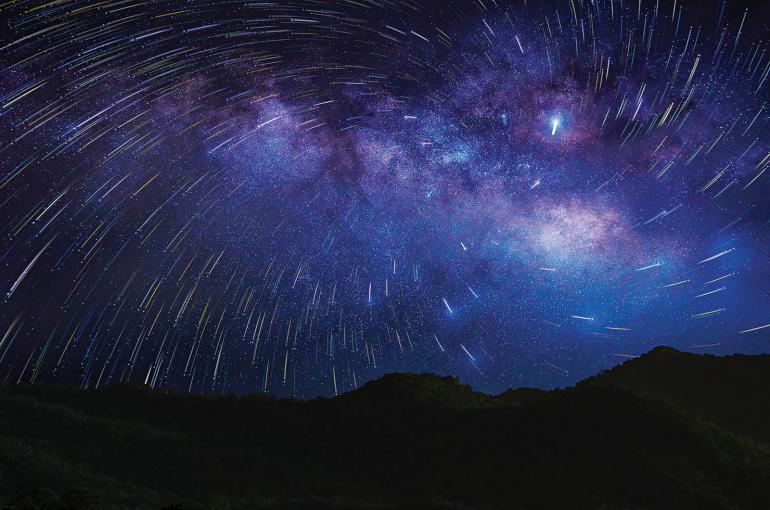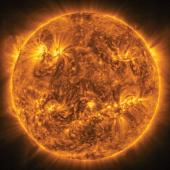Crying in the Dark
Late summer sheds its fiery tears.
Summer’s long days make for short nights. It’s nothing to cry about; the nights will grow increasingly longer as we head back down the seasonal slope toward fall, then winter. But by August, the sky itself will shed burning tears at the thought of passing summer—in the form of the annual Perseid meteor shower.
We can thank the early Christians for the shower’s sorrowful reputation. In the year 258 CE, a church administrator named Lawrence got into trouble with the Romans and was heinously martyred by being placed on a blazing gridiron. The date was August 10, and shortly thereafter, the sky let loose with its flaring streaks of light—fancied by some as mimicking scalding tears for Lawrence, or perhaps sympathetic sparks as if from the brazier on which he was executed. The shower became known in some circles as “St. Lawrence’s Tears,” an annual celestial crying jag commemorating the sorry event.
This year, the Perseids are bracketed in August by two much more substantial moons: the full Sturgeon Moon on August 1, and the equally full Blue Moon on August 31.
But St. Lawrence’s kin didn’t first note the Perseids; the sky-watching Chinese noted them as early as 36 CE. Today, we look for their physical origin in Comet Swift-Tuttle. The comet’s orbit brings it close to the sun every 133 years, heating the clump of ice and rock, which sheds its material into a particulate stream all around its orbit. Each year when the Earth passes near that orbit, we encounter the debris, and our atmosphere vaporizes the material as meteors around 50 miles up. Since the stream comes at us from the direction of the constellation Perseus, the flaming embers radiate across the sky from that star pattern, which gives them their name. The soggy label “shower” derives from the fact that we can see many more meteors than on a normal night—up to 60 or so per hour at its peak, if conditions are good and the shower is hitting just right.
This year, the peak is calculated to occur around 2am on August 13, making the night of August 12-13 the best night to watch. Perseus will rise in the northeast at nightfall and will swing up to nearly overhead by dawn. So find a dark, open location, recline with your toes pointing northeast, take in as much of the sky as you can, and enjoy. After midnight is the best time to look, as the Earth rotates us to face the stream head-on. A slight crescent moon rises just after 3am, but will not interfere with the view.
This year, the Perseids are bracketed in August by two much more substantial moons: the full Sturgeon Moon on August 1, and the equally full Blue Moon on August 31. The second isn’t blue; people just call it that to distinguish the appearance of the second full moon in a month. This happens every couple of years, and makes for 13 full moons in those calendar years. Both will be “supermoons,” meaning they occur near the moon’s perigee, or closest point in its orbit to the Earth—so they look a little bigger and brighter.
By August, the sky itself will shed burning tears at the thought of passing summer—in the form of the annual Perseid meteor shower.
The moon performs another notable act on August 24, when it passes in front of the bright reddish star Antares—the fiery heart of Scorpius the scorpion, who slinks across the southern sky in summertime. This “occultation” begins in daylight for us, but a few minutes before 9pm, as dusk gathers after sunset, it pops out from behind the sunlit side of the first quarter moon. We can then spend the evening watching the two slowly separate as the moon trundles in its orbit around the Earth.
But the Perseids are August’s main event. We may cry if clouds or a heavy smoke haze obscures the view, but if the sky is clear, be sure to go out and look for the tears of St. Lawrence burning across the sky.
Jim Manning is the former executive director of the Astronomical Society of the Pacific. He lives in Bozeman.










